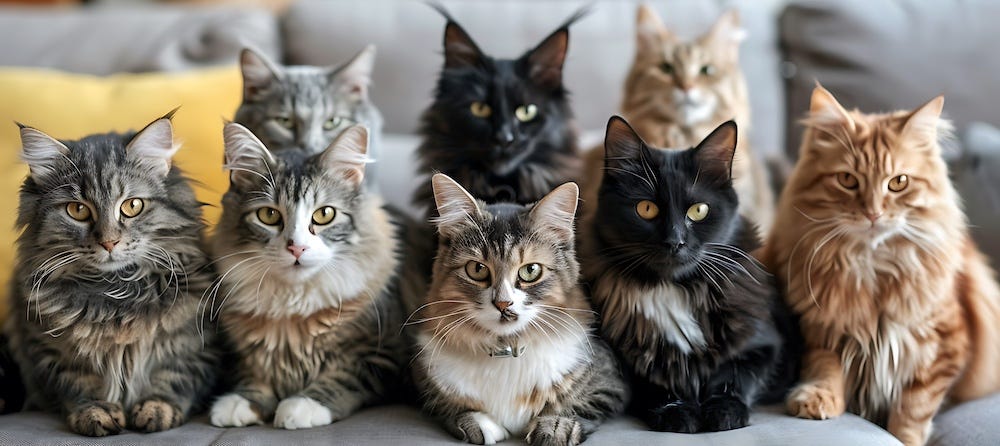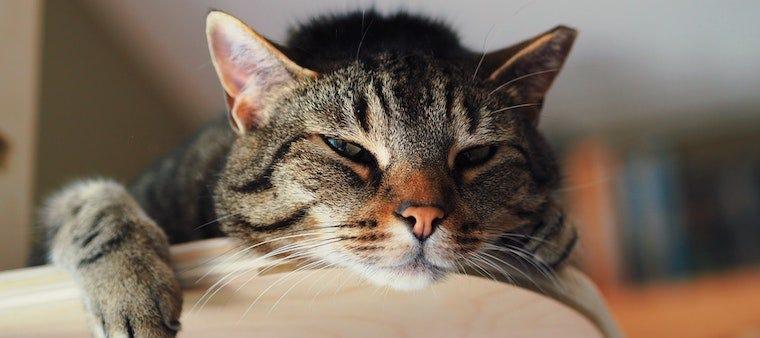One of the things that cat parents find so irresistible about our purring family members is their perceived air of independence. They groom themselves, entertain themselves, and do whatever they want with what seems like a lack of concern for what anyone else thinks.
However, this reputation for being aloof and self-reliant has led many people to believe that cats can’t get lonely, and nothing could be further from the truth!
Do cats get lonely?
Yes. Cats crave companionship, and if they are frequently left on their own for hours or even days at a time they experience the same feelings of loneliness, depression, or separation anxiety that we humans do.
If your cat is lonely, he won’t come right out and tell you, but he may be giving you subtle hints that he would like a little more together time.
Do cats prefer to be alone or with another cat?
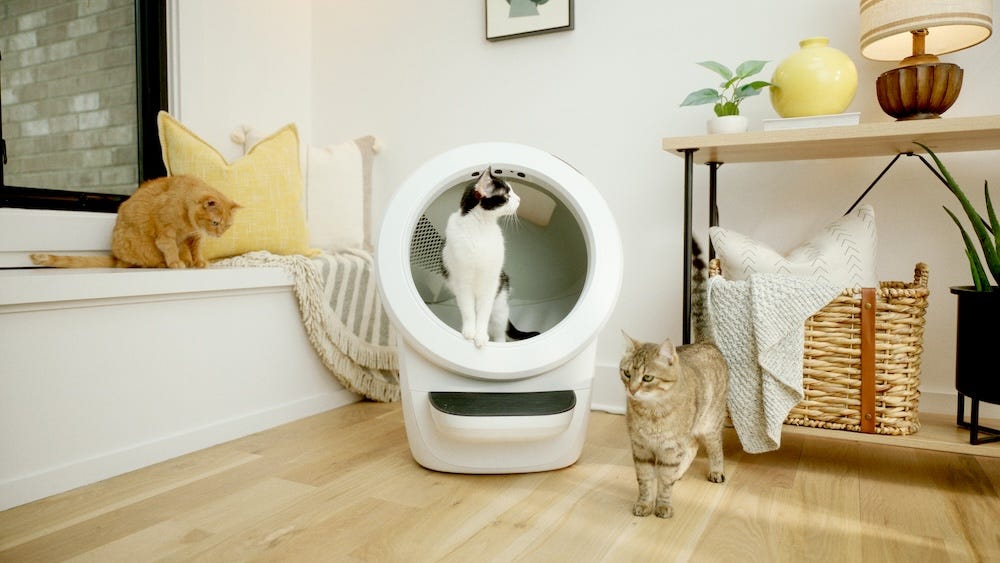
Cats have diverse personalities, and their preferences for social interaction can vary greatly from one individual to another. If you own multiple cats, read our multi-cat household guide.
Cats that are more likely to feel lonely
- Highly affectionate cat breeds like Siamese, Burmese, or Ragdoll cats may crave more human or feline companionship and may be more prone to loneliness if left alone for long periods.
- Active and playful cats may become bored and lonely if they lack stimulation and interaction. Without opportunities for play and mental stimulation, they may exhibit signs of loneliness or engage in destructive behavior.
- Formerly stray or feral cats may have developed strong social bonds with other cats for survival. When brought into a home environment without feline companionship, they may feel lonely without the presence of other cats.
- Elderly or senior cats may become more reliant on routine and companionship as they age. They may be more prone to loneliness if their environment changes or if they lose a longtime companion, whether feline or human.
Cats that are more likely to be independent
Other cat breeds and individual cats are more independent by nature:
- American Shorthair: The American Shorthair cat, one of America's oldest cat breeds, often exhibits independence. They are known for being self-sufficient and adaptable.
- Russian Blue: Russian Blues are typically reserved and can be independent cats. They are known for their intelligence and may enjoy spending time alone or entertaining themselves with toys.
- Norwegian Forest cat: While Norwegian Forest cats are affectionate and enjoy human company, they also have a strong independent streak. They are adaptable cats that can entertain themselves and are content with their own company.
- Maine Coon: Maine Coons are known for their friendly and sociable nature, but they also have an independent side. They are generally self-assured and can handle being alone for moderate periods.
- Abyssinian: Abyssinian cats are unique in appearance and personality. While affectionate and friendly, they are also known for their independence and can entertain themselves with play.
Cat loneliness and single cat syndrome
"Single cat syndrome" is often used to describe the behavior and potential issues that can arise when a cat lives alone without the companionship of other cats or animals. While some cats are perfectly content as solo pets, others may develop behavioral problems or exhibit signs of loneliness if they lack social interaction.
Cats who experience single-cat syndrome may display behaviors such as excessive vocalization, destructive behavior, aggression, or depression.
Is my cat lonely? How to tell if your cat is lonely
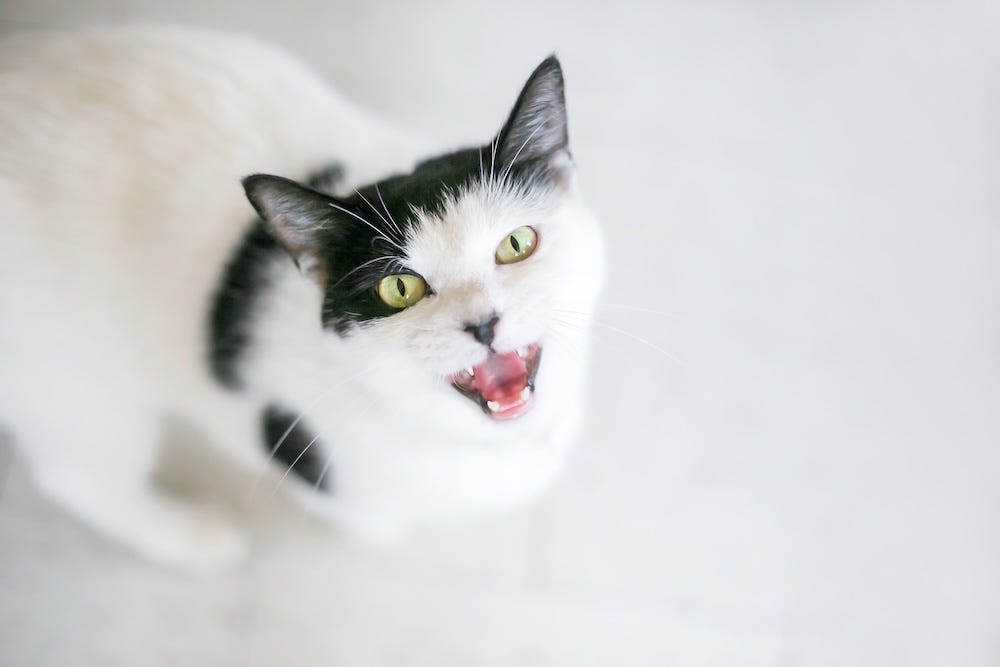
1. Overgrooming
Lonely cats frequently pull out their fur or groom themselves excessively. Cats are naturally meticulous groomers, but if your cat’s grooming regimen begins to border on obsessive compulsive behavior, it may be a sign that he’s feeling a little lonely.
Overgrooming can also indicate a medical condition that needs veterinary treatment, so interpreting this symptom as potential loneliness should be done in light of your cat’s other behaviors.
2. Excessive vocalization
Some kitties are talkative by nature, but if your normally quiet cat suddenly becomes super chatty, it may be his way of asking for a little more attention. Loud, insistent vocalization is also a pretty good clue that loneliness may be an issue.
Additionally, increased vocalization can be a symptom of pain or thyroid disease in some cats; to rule out thyroid disease or other medical causes of excessive vocalization, schedule an appointment with your veterinarian.
3. Litter box issues
If your cat is spraying or squatting outside the litter box, it’s always a good idea to rule out medical issues first, since this may be a symptom of kidney or urinary tract problems. However, your kitty may be trying to tell you something if he has a clean bill of health and is still doing his business where he knows he shouldn’t.
Your cat may have been marking as a way to communicate his displeasure at being left alone. This is especially true if you find that he’s eliminating on things with your scent, such as bedding or clothing.
4. Aggressive behavior
Lonely cats sometimes act out when they know their person is getting ready to leave. If your cat becomes aggressive or hostile when you’re on your way out, he’s not trying to get rid of you - he’s telling you that he wants more time with you!
5. Destructiveness
Lonely cats are bored cats, and they are masters at finding some pretty creative (and destructive) ways to occupy their minds! Cats may move or destroy things in an attempt to stay busy while you’re away. Whether your cat has decided to wreak havoc on your sofa, climb your curtains, or shred your toilet paper, destructive behavior is likely a sign of idle paws that have gone searching for something to do.
What to do if your cat is lonely
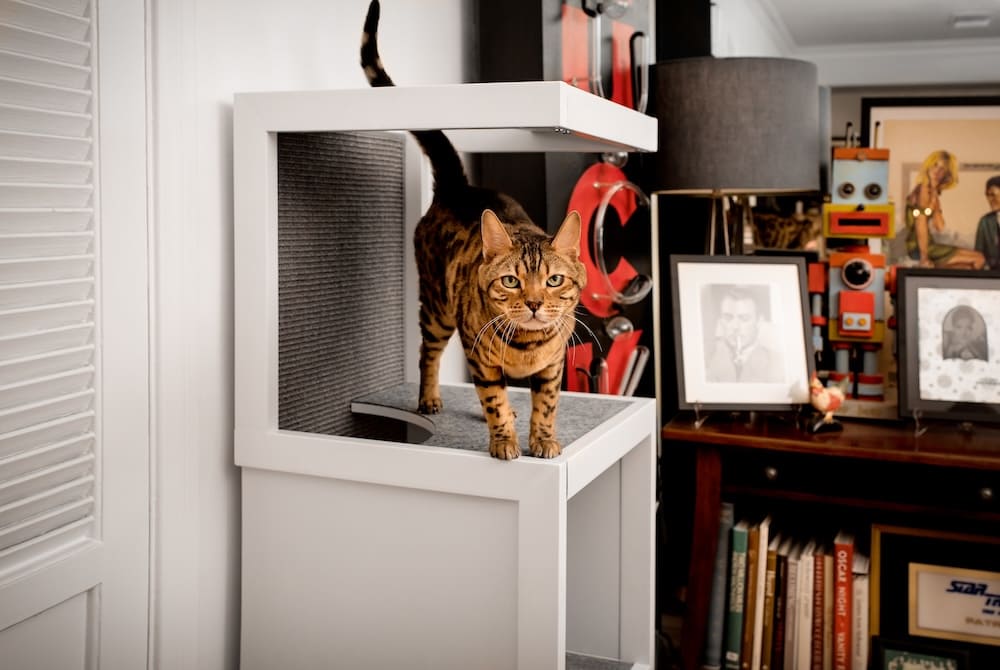
Spend quality time with your cat
Dedicate regular, interactive play sessions with your cat using toys they enjoy. Engage in activities that stimulate their mind and body with cat toys, such as puzzle feeders or interactive toys.
Provide a cat-friendly environment
Part of fixing your cat's loneliness issue is making sure they will have something to do when you are not there. Create an engaging environment for your cat with:
- Scratching posts
- Perches
- Cat shelves
- Hiding spots
This can help prevent boredom and provide mental stimulation.
Adopt another cat
Some cat parents help their cat feel less lonely by making more time for special attention, asking a neighbor to pop in and visit while they’re away, or making the indoor environment as stimulating and interesting as possible. These are all great solutions, and are sure to make any cat at least a little more content, but there’s one more option that you may not have thought about: adopting another cat!

It makes sense that single cats are far more likely to be lonely than those who share their lives with a feline friend. June is national Adopt-a-Cat Month, making it the purr-fect time to add another kitty to your family. Not only will you be providing a constant companion and a richer life for your cat, you’ll also be saving the life of the shelter cat you bring home!
Use calming products
Consider using pheromone diffusers or sprays, such as Feliway, to create a calming environment for your cat. These products can help reduce stress and anxiety, especially if your cat is experiencing loneliness due to changes in their environment or routine.
Establish a routine
Cats thrive on routine, so establish a consistent daily schedule for feeding, playtime, and interaction. Predictability can help reduce stress and provide a sense of security for your cat.



